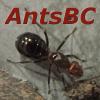Hey everyone,
I've decided to create a journal on a Manica hunteri queen I caught last year. I know not too many people are keeping Manica spp., and very few (probably in the tens) keep M. hunteri. I'm hoping that my observations can help people if they do end up catching Manica queens, or more specifically Manica hunteri, in the future. Without further ado, lets begin.
Last summer, I was walking on my driveway getting ready for hockey when all of a sudden I saw a very brightly coloured ant. Immediately, I dropped to my knees to check it out. This is when I realized it was a queen. We all know the feeling of when you see a queen, and when I saw this one I was overjoyed. I had never seen an ant in my area that looked like this and I was over the roof to find a new species (to my knowledge).
I didn't know what species it was and I got it identified on Jash's discord as Manica invidia. Later, upon further research (with the help of LC3) I clarified it was actually Manica hunteri.
I read a little bit on Manica and found out they were usually semi-claustral. Upon learning this, I attached the queens setup to a foraging container. The queen wasn't interested in food at all, and not once did I find the food touched or her foraging. After leaving her with the foraging setup attached for about a month or two, I decided to disconnect the test tube from the foraging container. After about another month of her doing nothing and no eggs being layed, I decided again to try to feed her. I placed a meal worm in the test tube and she rejected that too. Frustrated, I took the untouched meal worm out of the test tube after a few weeks of waiting. A few more months passed by like this with her not doing anything even with check ups once every 3 weeks or so, and finally hibernation came.
I hibernated her until the ants outside came out again, and then I switched her out of her old test tube as it had gotten a bit moldy over winter. In her new tube, I offered her some honey. I'm not too sure if she drank it or not, but on one of her later check ups i did find her investigating the honey.
About 3-6 weeks into the ant season I checked on her and I was overjoyed at what I saw; she had laid a nice little batch of eggs! I have only been checking on her once every 3 weeks after she laid eggs as I don't want to stress her out or cause her to eat her brood, but her eggs have been developing quite nicely from what I can tell. I'm expecting larva probably in a 1-3 more weeks. She gets pretty stressed whenever I check on her, but despite that I think she will raise the eggs to worker-hood. I will be updating this journal probably once or twice a month so please stay if you want to hear the results.
Here is a crappy video of her before hibernation, i'm sorry about the quality:
(P.S. I will include embedded photos of her with her eggs next time. I didn't want to interrupt her today as it isn't a day I usually check on her)
Thanks for reading!
-AntsBC
Edited by AntsBC, June 11 2019 - 1:05 PM.


























